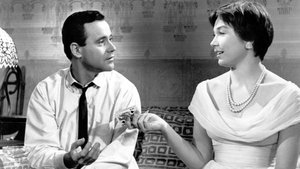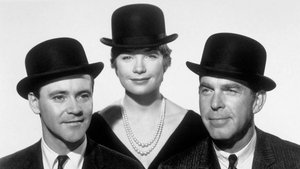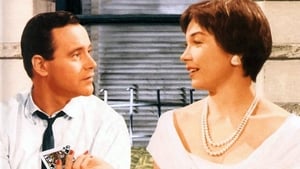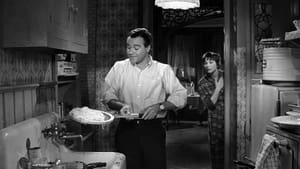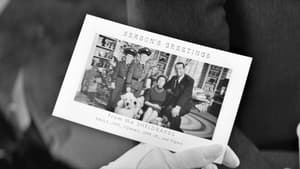Contact: info@alwanfilm.com
Video Sources 0 Views
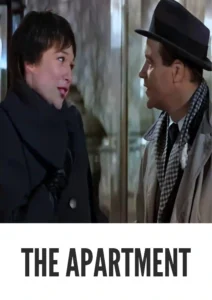
Synopsis
The Art of Romance: The Apartment 1960 Colorized Review and Analysis

Introduction
The Apartment 1960, a timeless classic in the realm of romantic comedies, has been reimagined through the lens of early colorization. This transformation adds a new layer of depth to an already captivating story. In this article, we explore the significance of The Apartment 1960’s early colored version and its impact on the viewing experience. Through a journey into its plot, characters, themes, and cinematic legacy, we unravel the enduring charm of this beloved film.
Check The Full Colorized Movies List
Check Our Colorized Movies Trailer Channel
Understanding The Apartment 1960 Colorized: Director, Cast, and Genre
Directed by the iconic Billy Wilder, The Apartment 1960 stars Jack Lemmon, Shirley MacLaine, and Fred MacMurray in pivotal roles. Wilder’s vision for the film transcends the confines of traditional romantic comedies, blending elements of comedy, drama, and social commentary. The result is a cinematic masterpiece that resonates with audiences across generations.
Exploring the World of The Apartment 1960 Colorized: Plot and Characters
Set in the bustling metropolis of New York City, The Apartment 1960 follows the story of C.C. Baxter, a lowly insurance clerk who lends out his apartment to his philandering superiors for their extramarital affairs. Baxter’s life takes an unexpected turn when he falls for Fran Kubelik, an elevator operator who is also romantically involved with his boss.
The film’s protagonist, C.C. Baxter, portrayed by the incomparable Jack Lemmon, embodies the quintessential everyman caught in the whirlwind of corporate politics and unrequited love. Shirley MacLaine delivers a stellar performance as Fran Kubelik, capturing the character’s vulnerability and resilience with grace and nuance. Fred MacMurray rounds out the cast with his portrayal of the conniving executive, Mr. Sheldrake, whose actions set in motion the film’s emotional rollercoaster.
The Art of Film Colorization
Film colorization, the process of adding color to black and white footage, has a rich and controversial history in the world of cinema. While some argue that colorization enhances the visual appeal of classic films and makes them more accessible to modern audiences, others believe it detracts from the director’s original vision and diminishes the artistic integrity of the work.
Early Colored Films: A Brief History
The emergence of early colored films marked a significant milestone in the evolution of cinema, offering filmmakers new tools for artistic expression. From hand-tinted frames to two-strip Technicolor, early colored techniques paved the way for the vibrant hues and dynamic visuals that define modern filmmaking.
The Apartment 1960 and Its Early Colored Version
The decision to release The Apartment 1960 in a colorized format represents a departure from its original black and white aesthetic. While purists may lament the change, others welcome the opportunity to experience the film in a new light.
Colorization adds a layer of visual richness to The Apartment 1960, enhancing its timeless charm and romantic allure. From the bustling streets of New York City to the cozy confines of Baxter’s apartment, colorization breathes new life into Wilder’s meticulously crafted world, inviting audiences to immerse themselves in its beauty and complexity.
The Debate Over Film Colorization
The debate over film colorization remains contentious, with passionate arguments on both sides of the issue. While proponents argue that colorization modernizes classic films and introduces them to new audiences, opponents contend that it compromises the director’s original vision and diminishes the cultural significance of the work.
Examining The Apartment 1960 as an Early Colored Film
As one of the earliest examples of colorization in cinema, The Apartment 1960 offers valuable insights into the evolving relationship between black and white and color imagery. While purists may prefer the film in its original monochromatic form, there is no denying the visual impact of its early colored version.
Colorization enhances the emotional depth and narrative richness of The Apartment 1960, elevating its themes of love, loneliness, and redemption to new heights. From the warm glow of city lights to the subtle nuances of facial expressions, colorization adds a layer of intimacy and immediacy to Wilder’s masterwork, drawing audiences into its world with unparalleled intensity.
Influence and Legacy: The Apartment 1960 Colorized’s Impact on Cinema
The Apartment 1960 has left an indelible mark on the cinematic landscape, inspiring countless filmmakers to explore themes of love, ambition, and moral ambiguity. Its influence can be seen in the works of directors like Woody Allen, Nora Ephron, and Cameron Crowe, who have drawn inspiration from its iconic characters and timeless storytelling.
Director’s Cinematic Legacy: Beyond The Apartment 1960 Colorized
Billy Wilder’s legacy extends far beyond The Apartment 1960, encompassing a diverse body of work that spans multiple genres and styles. From the biting satire of “Sunset Boulevard” to the witty banter of “Some Like It Hot,” Wilder’s films continue to captivate audiences with their wit, intelligence, and emotional depth.
Themes Explored in The Apartment 1960 Colorized
The Apartment 1960 explores a range of themes, from the nature of love and loneliness to the corrosive effects of corporate culture. Its portrayal of the struggles and triumphs of everyday life resonates with audiences on a deeply personal level, offering a poignant meditation on the human condition.
Reception and Controversy Surrounding The Apartment 1960 Colorized
Upon its release, The Apartment 1960 received widespread critical acclaim, earning multiple Academy Awards, including Best Picture, Best Director, and Best Original Screenplay. Audiences were captivated by its witty dialogue, nuanced performances, and bittersweet romance, cementing its status as a cinematic classic.
Where to Watch The Apartment 1960 Colorized Online
For those eager to experience the magic of The Apartment 1960, the film is readily available on popular streaming platforms such as Netflix, Amazon Prime, and Hulu. Whether viewed in its original black and white format or its early colored version, The Apartment 1960 promises to enchant audiences with its timeless charm and universal appeal.
FAQs About The Apartment 1960 Colorized
- Is The Apartment 1960 based on a true story? No, The Apartment 1960 is a work of fiction, though it draws inspiration from real-life experiences and observations.
- Who are the main actors in The Apartment 1960? The film stars Jack Lemmon as C.C. Baxter, Shirley MacLaine as Fran Kubelik, and Fred MacMurray as Mr. Sheldrake.
- What is the controversy surrounding the colorization of The Apartment 1960? Some argue that colorization detracts from the director’s original vision and diminishes the artistic integrity of the work, while others see it as a legitimate means of updating classic films for modern audiences.
Conclusion
In conclusion, The Apartment 1960 stands as a timeless testament to the enduring power of love, laughter, and human connection. Whether viewed in its original black and white format or its early colored version, the film continues to captivate audiences with its wit, charm, and emotional resonance. As we continue to debate the merits of film colorization, one thing remains clear: the legacy of The Apartment 1960 will endure for generations to come.
